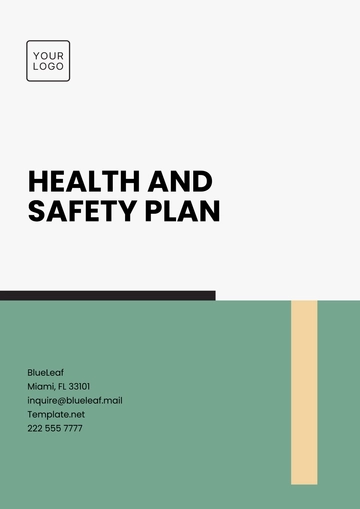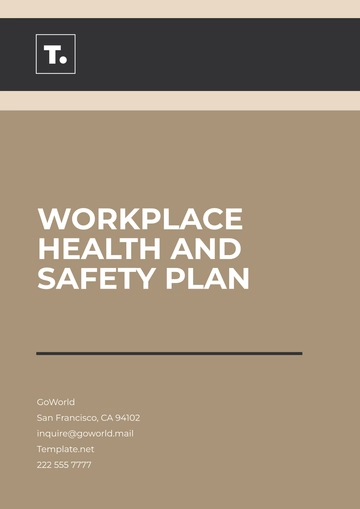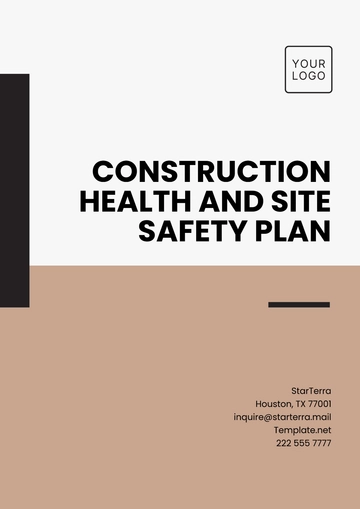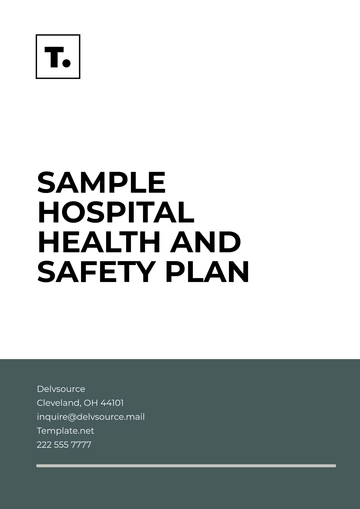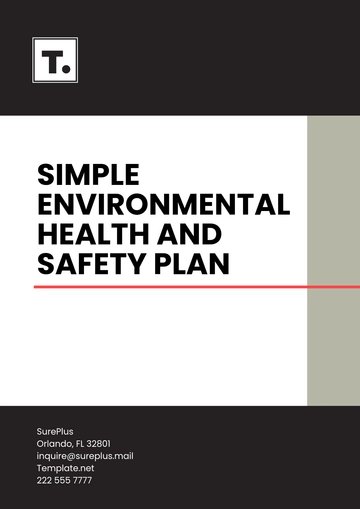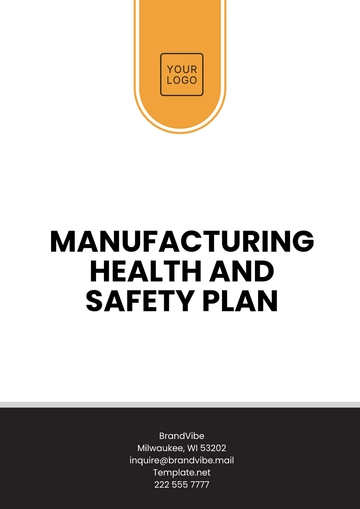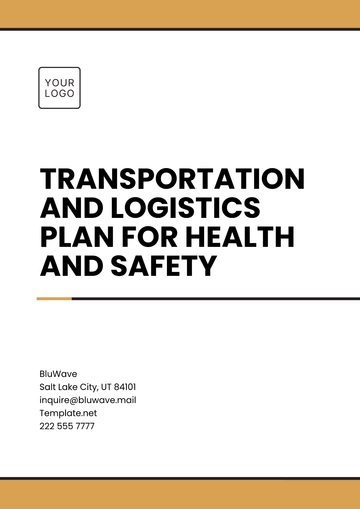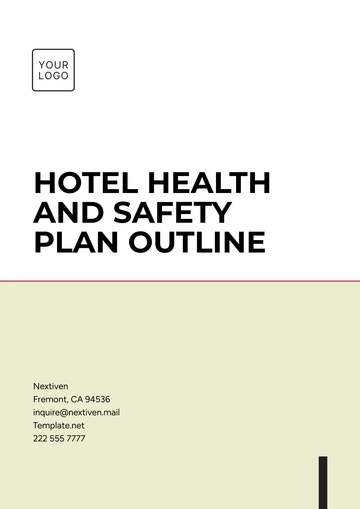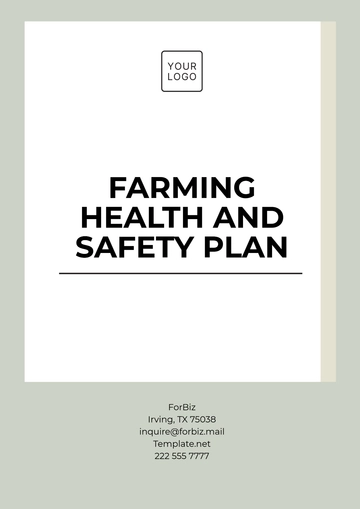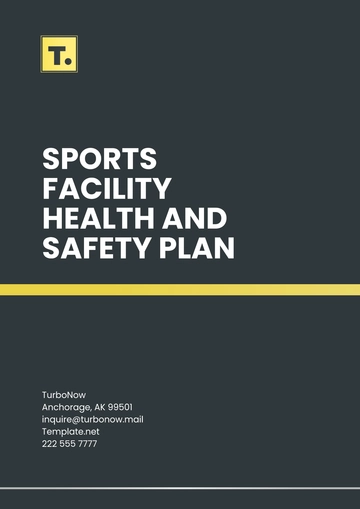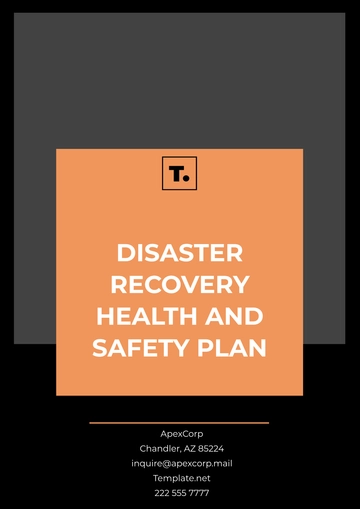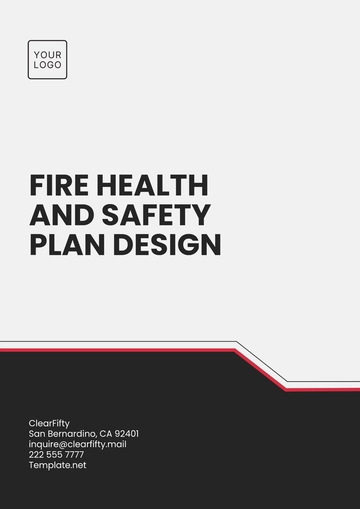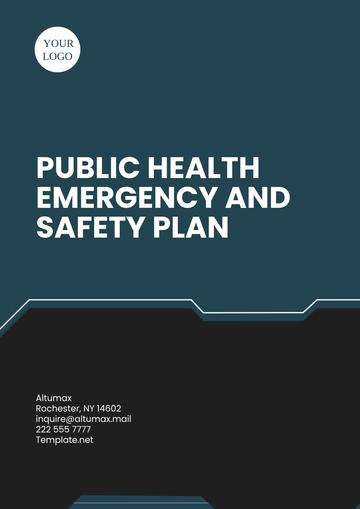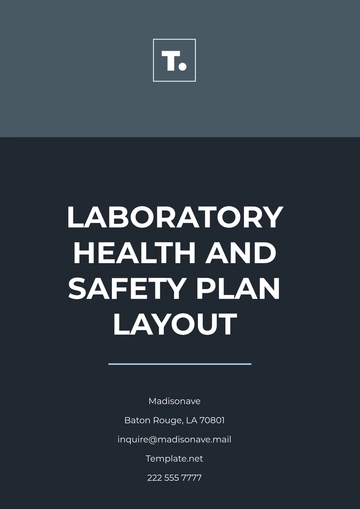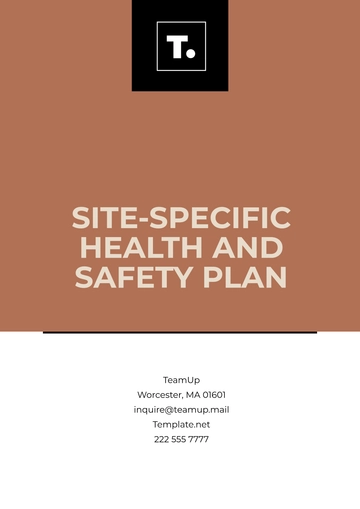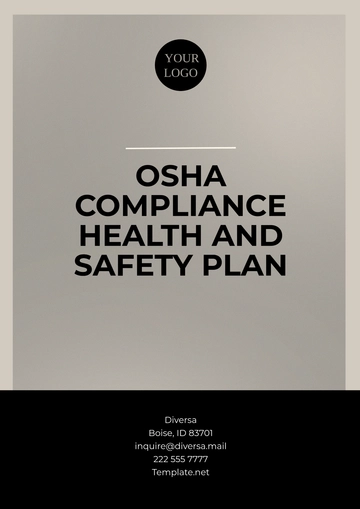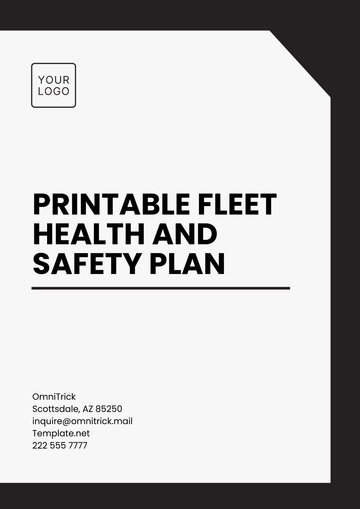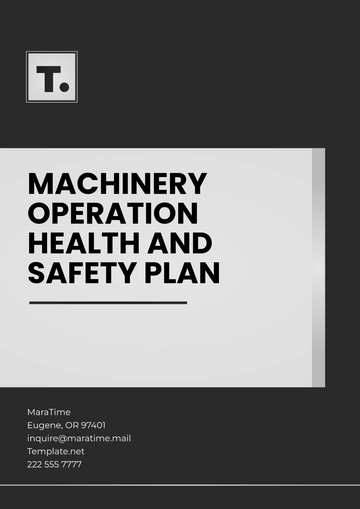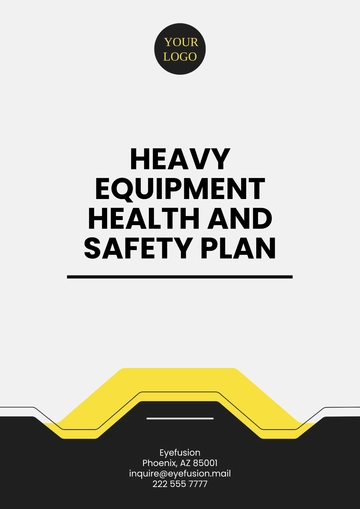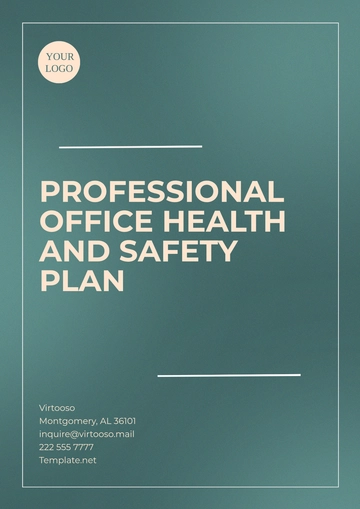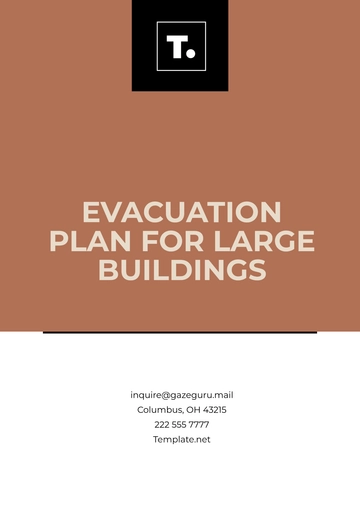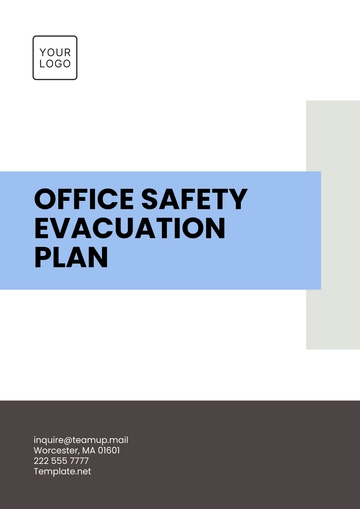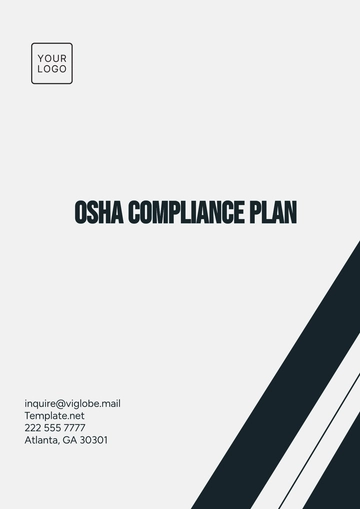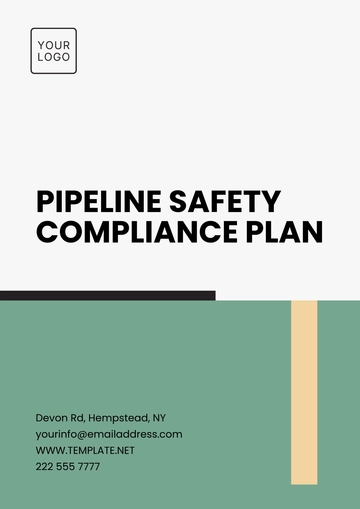Free Restaurant Fire Safety Plan
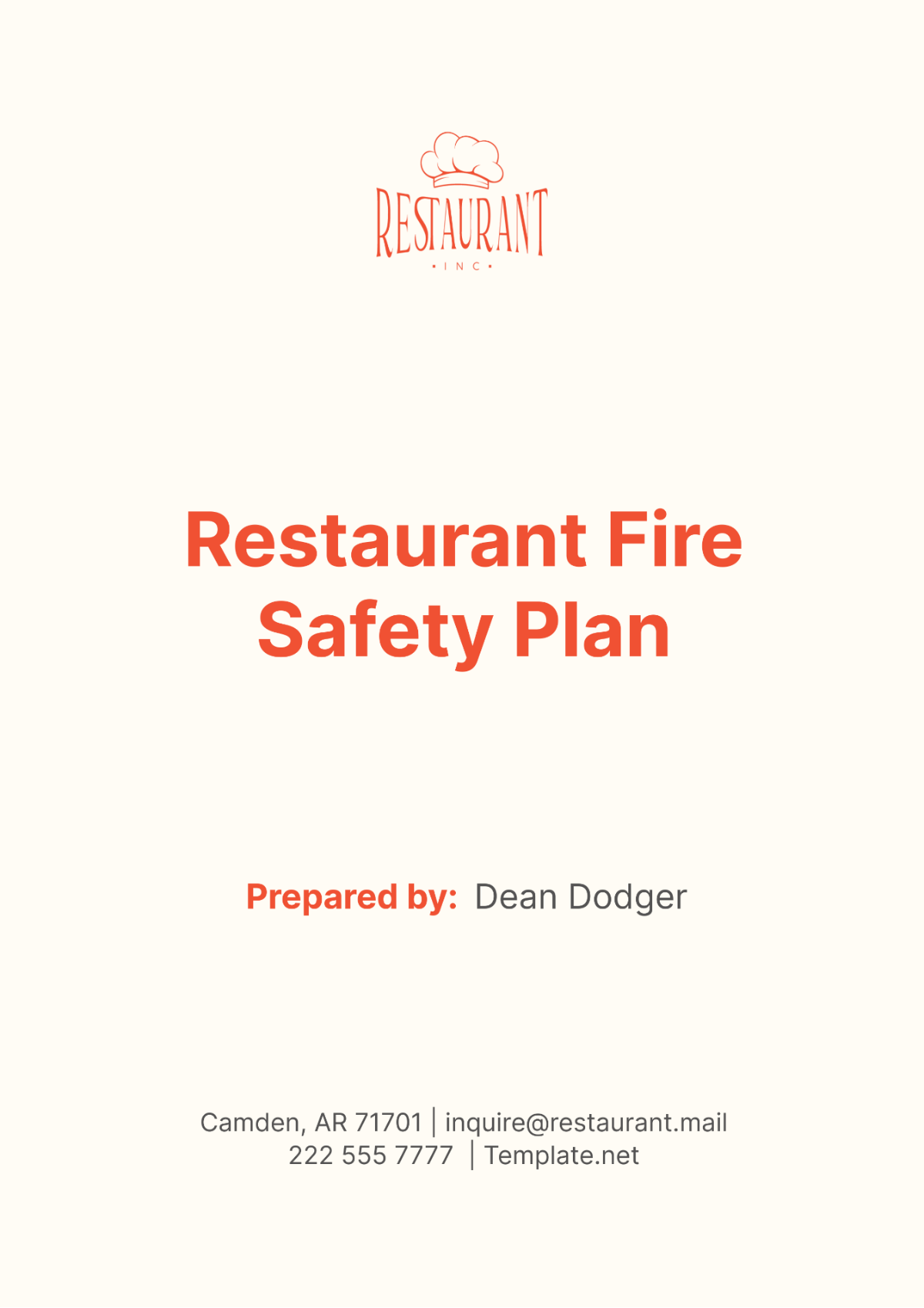
I. Introduction
At [Your Company Name], we prioritize the safety of our staff, customers, and premises above all else. Recognizing the potential risks associated with the restaurant industry, we have developed a comprehensive Fire Safety Plan. This plan is designed to ensure that everyone within our establishment is well-equipped to respond promptly and appropriately in the event of a fire emergency.
The plan serves as a guide, outlining the necessary steps and precautions to take in order to prevent fires and mitigate damage should a fire occur. It is a testament to our commitment to safety and our proactive approach to risk management.
In addition to outlining procedures for fire prevention and response, this plan also emphasizes the importance of regular training and awareness among our staff. By ensuring that all staff members are well-versed in fire safety protocols, we aim to foster a culture of safety within our establishment.
II. Emergency Contact Information
In the event of a fire, it is crucial to have key emergency contact information readily available. The following table provides a list of important contacts along with their corresponding numbers:
Contact | Number |
|---|---|
Fire Department | 911 |
Non-Emergency Fire Services | |
Restaurant Manager | |
Emergency Medical Services | |
Building Security |
Each contact in this table plays a vital role in our response to a fire emergency. The Fire Department and Emergency Medical Services are first responders who can provide immediate assistance during a fire. The Non-Emergency Fire Services can be contacted for less urgent fire safety concerns. The Restaurant Manager is responsible for coordinating our internal response to a fire, while Building Security can assist with evacuation procedures and securing the premises.
Having these contacts readily available can significantly improve our response time during a fire emergency. It ensures that we can quickly communicate with all relevant parties, which is crucial for effective emergency management. Furthermore, it provides a clear protocol for staff to follow, reducing confusion and panic during an emergency.
III. Fire Prevention Measures
Fire prevention is the first line of defense in fire safety. These measures are designed to minimize the risk of a fire and to ensure a swift and effective response if a fire does occur.
A. Staff Training
Fire Safety Training: All staff members receive fire safety training upon hiring. This training covers fire prevention strategies, alarm operation, and evacuation procedures. The training ensures that all staff members are well-versed in fire safety protocols and can respond effectively in the event of a fire.
Practical Drills: Practical drills are conducted regularly to simulate fire scenarios. These drills help to reinforce the training and ensure that staff can respond effectively in a real fire situation. They also provide an opportunity for staff to practice using fire safety equipment and familiarize themselves with evacuation routes.
Refresher Courses: Regular refresher courses are conducted annually to keep the staff updated on the latest fire safety protocols and procedures. This ensures that the staff’s knowledge of fire safety remains current and comprehensive.
Emergency Response Training: In addition to fire safety training, staff members also receive training on how to respond to other emergencies. This includes training on first aid, disaster response, and crisis management.
Customized Training: The training program is customized to meet the specific needs and challenges of the restaurant industry. This ensures that the training is relevant and effective.
B. Fire Suppression Equipment
Installation: Fire extinguishers and sprinkler systems are installed throughout the restaurant. These systems are regularly inspected and maintained to ensure they are in good working condition.
Training: All staff members are trained in the proper use of fire extinguishers. This training is part of the fire safety training provided to all staff members.
Regular Inspections: The fire suppression equipment is regularly inspected to ensure it is in good working condition. Any issues identified during these inspections are addressed immediately.
Upgrades: The fire suppression equipment is regularly upgraded to ensure it remains effective and up-to-date. This includes replacing old equipment and installing new equipment as needed.
Compliance: The installation and maintenance of fire suppression equipment comply with all relevant fire safety regulations and standards.
C. Kitchen Safety
Fire Suppression System: The kitchen is equipped with a fire suppression system designed to quickly extinguish any fires that may occur during cooking.
Safe Practices: All cooking appliances must be turned off when not in use. Staff members are trained on proper handling of flammable materials and are aware of the potential fire risks associated with their duties.
Regular Inspections: The kitchen area is regularly inspected for potential fire hazards. This includes checking appliances, electrical outlets, and storage areas.
Training: Kitchen staff receive specialized fire safety training. This includes training on how to prevent kitchen fires and how to respond if a fire occurs.
Emergency Procedures: Emergency procedures are in place for kitchen fires. These procedures are clearly communicated to all kitchen staff and are regularly reviewed and updated.
IV. Evacuation Procedures
In the event of a fire, knowing how to evacuate safely is of utmost importance. Our evacuation procedures are designed to ensure the safety of all individuals within the restaurant.
A. Alarm Activation
Immediate Activation: If a fire is detected or suspected, the nearest fire alarm pull station should be activated immediately. This alerts everyone in the building to the presence of a fire and triggers the fire suppression systems.
Safety First: Attempting to extinguish the fire should only be done by trained individuals and only if it is safe to do so. The primary concern should always be the safety of all individuals within the restaurant.
Alert Authorities: After ensuring the safety of all individuals and activating the fire alarm, the next step is to alert the authorities. This involves calling the fire department and providing them with all the necessary details about the fire.
B. Evacuation Routes
Familiarity with Routes: All staff members and customers should be familiar with the evacuation routes and exits nearest to their location. This ensures that everyone can quickly and safely exit the building in the event of a fire.
Clear Signage: Maps showing evacuation routes are posted throughout the restaurant for easy reference. Clear signage is crucial in guiding individuals to the nearest exit, especially in a stressful situation like a fire.
Regular Review: The evacuation routes are regularly reviewed and updated to ensure they are always clear and accessible. Any changes to the routes are communicated to all staff members and updated on the signage.
C. Assembly Point
Designated Area: Once evacuated, all individuals should proceed to the designated assembly point at the Assembly Point Location. This helps to ensure that everyone is accounted for and allows for an organized response to the emergency.
Re-entry Prohibition: Under no circumstances should anyone re-enter the building until given the all-clear by emergency personnel. This is to ensure everyone’s safety as there may still be hidden dangers even after the fire is extinguished.
Accountability: At the assembly point, a roll call will be conducted to ensure that everyone has evacuated safely. If anyone is missing, this information can be relayed to the emergency services for a rescue operation.
V. Fire Response Actions
In the event of a fire, it is crucial to have a clear plan of action. Our fire response actions are designed to ensure a swift and effective response to a fire, minimizing damage and ensuring the safety of all individuals within the restaurant.
A. Immediate Actions
Upon discovering a fire, the following steps should be taken:
Activate the Fire Alarm: The first step upon discovering a fire is to activate the nearest fire alarm pull station. This alerts everyone in the building to the presence of a fire and triggers the fire suppression systems. It’s important to remember that every second counts in a fire situation, and immediate activation of the fire alarm can save lives.
Call 911: After activating the fire alarm, the next step is to call 911 and provide details about the fire. Even if the fire seems small, it’s important to notify the fire department immediately. Early notification allows for a swift response, which can be critical in minimizing damage and ensuring safety.
Evacuate: Once the fire alarm has been activated and the fire department notified, the next step is to evacuate the building using the nearest exit. It’s important to stay calm and move quickly and orderly towards the exit. Do not use elevators during a fire.
Proceed to the Assembly Point: After evacuating the building, proceed to the designated assembly point. This helps to ensure that everyone is accounted for and allows for an organized response to the emergency.
B. Assisting Customers
During a fire, staff members have a responsibility to assist customers. This includes:
Guiding Customers: Staff should guide customers to the nearest exit and towards the assembly point. They should remain calm and reassuring, helping to keep customers calm as well.
Assisting Those in Need: Special attention should be given to individuals who may require additional assistance, such as the elderly, children, or individuals with disabilities. Staff should assist these individuals in evacuating the building.
Accounting for All Customers: Once at the assembly point, staff should help to account for all customers. If anyone is missing, this information should be relayed to the emergency services immediately.
VI. Regular Review and Update
Our Fire Safety Plan is a living document. It is not static and is subject to changes and improvements over time. This ensures that the plan remains relevant and effective in ensuring the safety of our staff and customers.
A. Annual Review
Scheduled Reviews: We conduct scheduled reviews of our Fire Safety Plan on an annual basis. This allows us to assess the effectiveness of the plan and make necessary updates to reflect any changes in our operations or fire safety regulations.
Inclusion of New Information: During these reviews, we incorporate new information, insights, and best practices related to fire safety. This ensures that our plan is always up-to-date with the latest fire safety standards and recommendations.
Evaluation of Past Incidents: We also evaluate any fire incidents that occurred during the year. This helps us understand what worked well in our response and where improvements can be made.
Stakeholder Involvement: These reviews involve key stakeholders, including management, staff, and local fire safety officials. Their input is invaluable in improving the plan.
B. Updates Following Significant Changes
Changes in Operations: If there are significant changes in our operations, such as a renovation or expansion, we update our plan to reflect these changes. This ensures that the plan remains relevant and effective.
Changes in Regulations: If there are changes in fire safety regulations, we update our plan to ensure compliance with these new regulations.
Changes in Staff: If there are changes in our staff, such as the hiring of new employees or changes in roles and responsibilities, we update our plan and provide necessary training to these staff members.
Changes in Equipment: If there are changes in our fire safety equipment, such as the installation of a new fire suppression system, we update our plan to include information about this new equipment.
- 100% Customizable, free editor
- Access 1 Million+ Templates, photo’s & graphics
- Download or share as a template
- Click and replace photos, graphics, text, backgrounds
- Resize, crop, AI write & more
- Access advanced editor
Ensure safety compliance without starting from scratch with the Restaurant Fire Safety Plan Template available on Template.net! This editable template allows you to detail specific safety procedures. The customizable layout ensures comprehensive coverage, and the AI Editor Tool assists in drafting a clear and precise safety plan! Generate right now!
You may also like
- Finance Plan
- Construction Plan
- Sales Plan
- Development Plan
- Career Plan
- Budget Plan
- HR Plan
- Education Plan
- Transition Plan
- Work Plan
- Training Plan
- Communication Plan
- Operation Plan
- Health And Safety Plan
- Strategy Plan
- Professional Development Plan
- Advertising Plan
- Risk Management Plan
- Restaurant Plan
- School Plan
- Nursing Home Patient Care Plan
- Nursing Care Plan
- Plan Event
- Startup Plan
- Social Media Plan
- Staffing Plan
- Annual Plan
- Content Plan
- Payment Plan
- Implementation Plan
- Hotel Plan
- Workout Plan
- Accounting Plan
- Campaign Plan
- Essay Plan
- 30 60 90 Day Plan
- Research Plan
- Recruitment Plan
- 90 Day Plan
- Quarterly Plan
- Emergency Plan
- 5 Year Plan
- Gym Plan
- Personal Plan
- IT and Software Plan
- Treatment Plan
- Real Estate Plan
- Law Firm Plan
- Healthcare Plan
- Improvement Plan
- Media Plan
- 5 Year Business Plan
- Learning Plan
- Marketing Campaign Plan
- Travel Agency Plan
- Cleaning Services Plan
- Interior Design Plan
- Performance Plan
- PR Plan
- Birth Plan
- Life Plan
- SEO Plan
- Disaster Recovery Plan
- Continuity Plan
- Launch Plan
- Legal Plan
- Behavior Plan
- Performance Improvement Plan
- Salon Plan
- Security Plan
- Security Management Plan
- Employee Development Plan
- Quality Plan
- Service Improvement Plan
- Growth Plan
- Incident Response Plan
- Basketball Plan
- Emergency Action Plan
- Product Launch Plan
- Spa Plan
- Employee Training Plan
- Data Analysis Plan
- Employee Action Plan
- Territory Plan
- Audit Plan
- Classroom Plan
- Activity Plan
- Parenting Plan
- Care Plan
- Project Execution Plan
- Exercise Plan
- Internship Plan
- Software Development Plan
- Continuous Improvement Plan
- Leave Plan
- 90 Day Sales Plan
- Advertising Agency Plan
- Employee Transition Plan
- Smart Action Plan
- Workplace Safety Plan
- Behavior Change Plan
- Contingency Plan
- Continuity of Operations Plan
- Health Plan
- Quality Control Plan
- Self Plan
- Sports Development Plan
- Change Management Plan
- Ecommerce Plan
- Personal Financial Plan
- Process Improvement Plan
- 30-60-90 Day Sales Plan
- Crisis Management Plan
- Engagement Plan
- Execution Plan
- Pandemic Plan
- Quality Assurance Plan
- Service Continuity Plan
- Agile Project Plan
- Fundraising Plan
- Job Transition Plan
- Asset Maintenance Plan
- Maintenance Plan
- Software Test Plan
- Staff Training and Development Plan
- 3 Year Plan
- Brand Activation Plan
- Release Plan
- Resource Plan
- Risk Mitigation Plan
- Teacher Plan
- 30 60 90 Day Plan for New Manager
- Food Safety Plan
- Food Truck Plan
- Hiring Plan
- Quality Management Plan
- Wellness Plan
- Behavior Intervention Plan
- Bonus Plan
- Investment Plan
- Maternity Leave Plan
- Pandemic Response Plan
- Succession Planning
- Coaching Plan
- Configuration Management Plan
- Remote Work Plan
- Self Care Plan
- Teaching Plan
- 100-Day Plan
- HACCP Plan
- Student Plan
- Sustainability Plan
- 30 60 90 Day Plan for Interview
- Access Plan
- Site Specific Safety Plan
